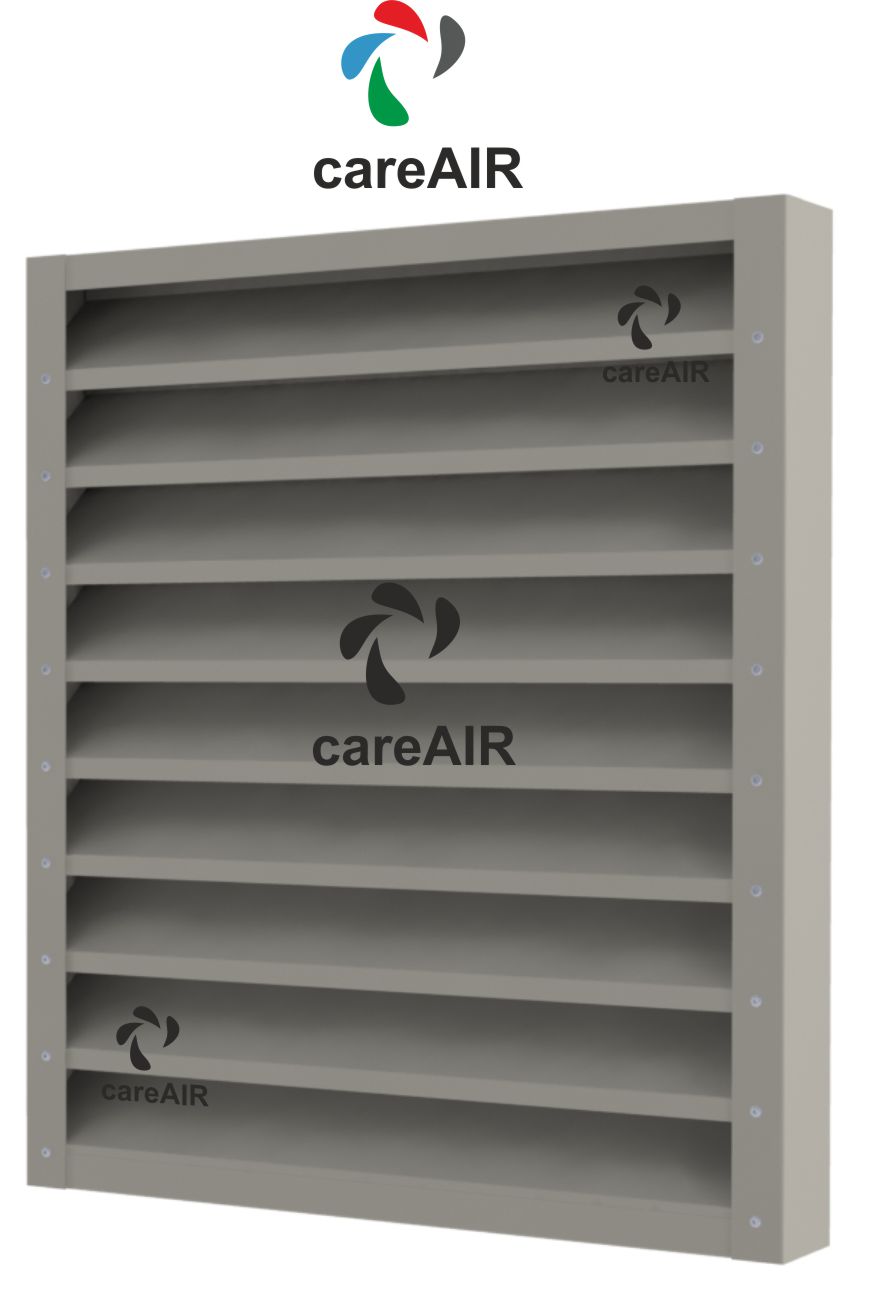
We provides solutions in the following areas:-
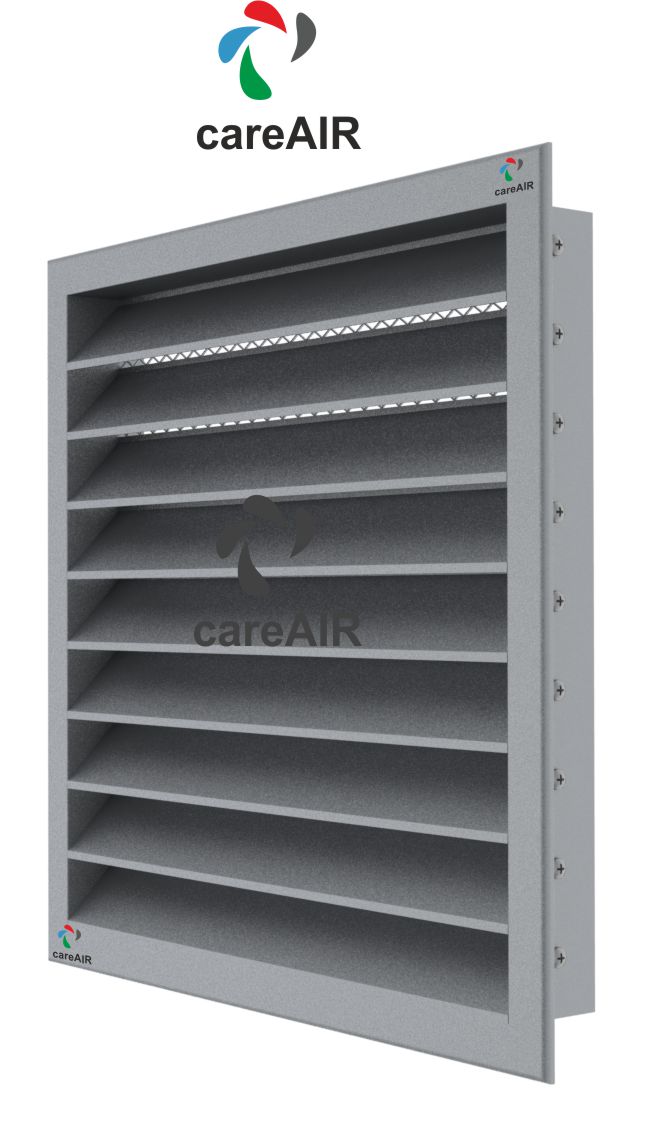
Aluminium Louvre - Intake/Exhaust/Fresh
Louvres in HVAC systems are air control devices designed to allow air to flow freely while providing protection against rain, debris, and unwanted elements entering the system. They consist of a series of horizontal or vertical slats or blades that are angled to regulate airflow and shield the opening. Louvres are commonly used in building exteriors, HVAC duct systems, or mechanical rooms for air intake and exhaust purposes. Louvres allow air to enter or exit a space while preventing the ingress of rain, dirt, insects, and other debris. Louvres consist of fixed or adjustable blades arranged in a slanted pattern. Typically made from aluminium, galvanized steel, stainless steel, or other corrosion-resistant materials. Used to bring fresh air into HVAC systems and exhaust stale air from buildings. Installed in walls or doors to provide ventilation for equipment and maintain proper operating temperatures.
Aluminium Louvre - Intake/Exhaust/Fresh - Round.
Round louvres in HVAC systems are circular air distribution components used for regulating, directing, or exhausting airflow. These devices are typically installed in ceilings, walls, or ductwork to enhance air circulation while also serving as protective or decorative elements. Their design incorporates fixed blades (louvres) arranged within a round frame, enabling control over airflow direction and intensity. Round shape, often featuring a series of adjustable or fixed blades arranged in concentric circles or a radial pattern. They facilitate the passage of air into or out of a space while controlling its volume and direction. Can serve as supply, return, or exhaust outlets, depending on the HVAC system's requirements. Typically made of aluminium, steel, stainless steel, or durable plastic, chosen for their strength and resistance to environmental factors like humidity or corrosion. May include damper mechanisms for controlling airflow volume. Can be equipped with a filter or screen to prevent debris, dust, or insects from entering the HVAC system.
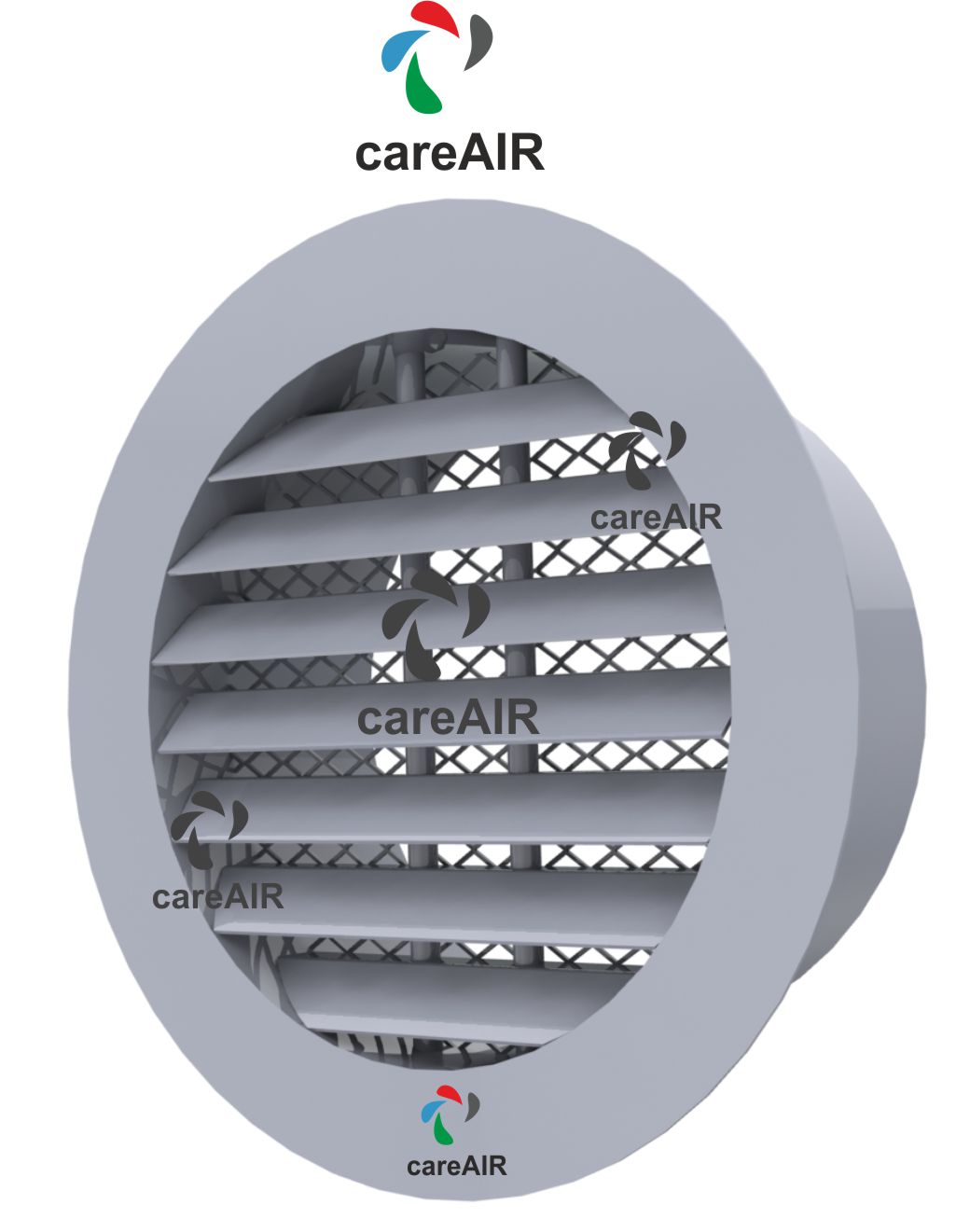
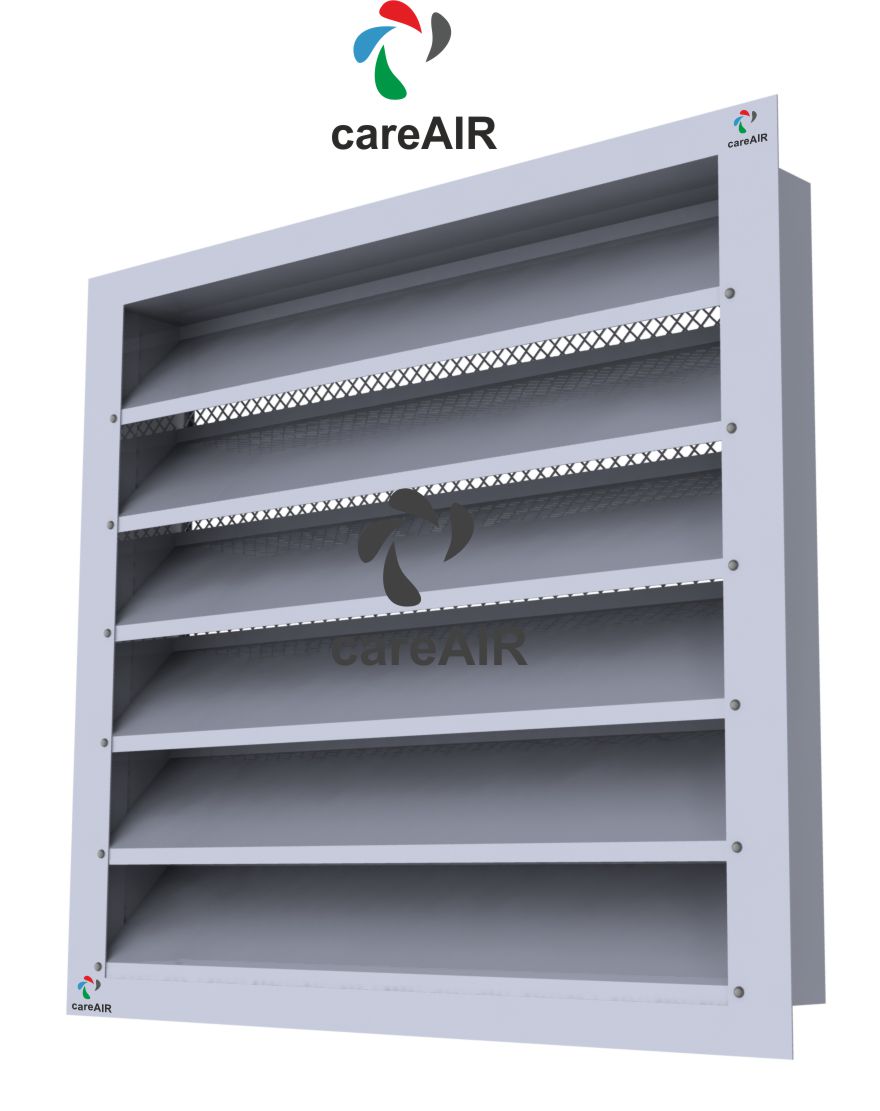
GI Louvre - Intake/Exhaust/Fresh
GI Louvres in HVAC systems are ventilation components made from Galvanized Iron (GI), designed to regulate airflow, provide ventilation, and often protect against external elements like rain, debris, or pests. Louvres consist of multiple slats or blades arranged at an angle, allowing air to pass through while preventing unwanted elements from entering the system. Offers durability and longevity, even in outdoor or harsh environments. Often designed with additional features such as insect mesh or bird screens to prevent small animals or debris from entering the HVAC system. Installed in walls, ceilings, or duct openings, depending on the specific ventilation requirement. The galvanized coating provides excellent resistance to corrosion, making GI louvres suitable for outdoor and industrial environments.
Sand Trap Louvre.
Sand trap louvers in HVAC systems are specialized air intake or exhaust louvers designed to filter and remove sand, dust, and other airborne particles from the airflow entering a ventilation system. These louvers are typically installed in environments where sand and dust are prevalent, such as desert regions or industrial areas, to protect HVAC equipment and improve air quality. Composed of a series of inclined blades or vanes arranged to create a labyrinth-like pathway. The design allows air to pass through while causing heavier particles like sand and dust to settle out due to inertia. Made from durable materials like aluminium, galvanized steel, or stainless steel to withstand harsh environmental conditions. Operates as a primary filter to trap sand and large dust particles. Designed to handle high air velocities and large volumes of air while maintaining efficiency in separating sand and dust. Essential for HVAC systems in areas with high sand and dust concentrations to prevent clogging and damage.
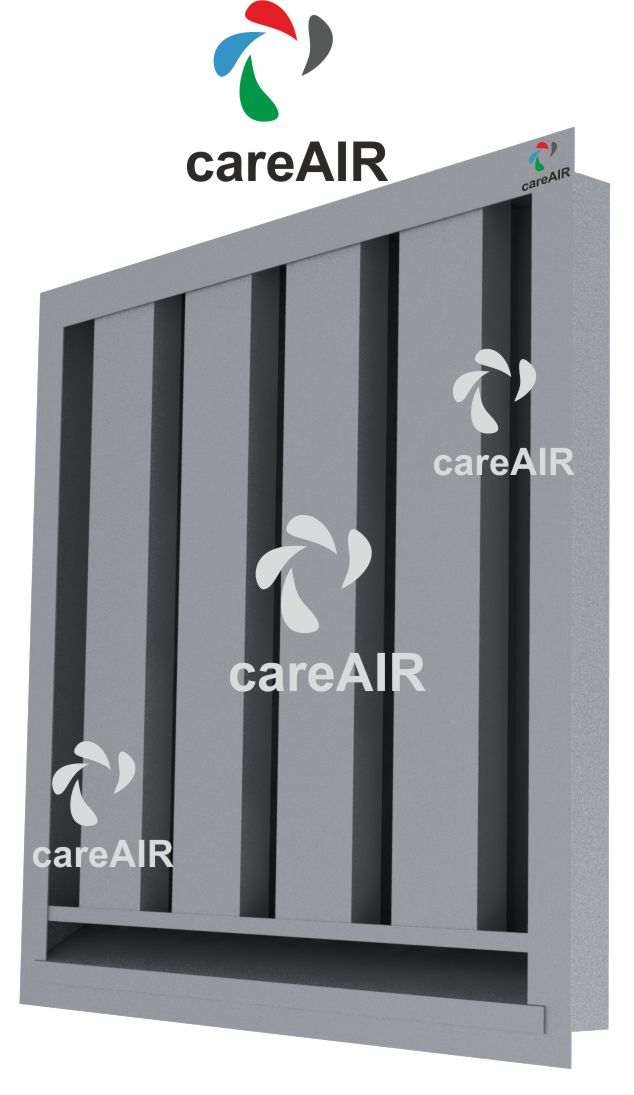
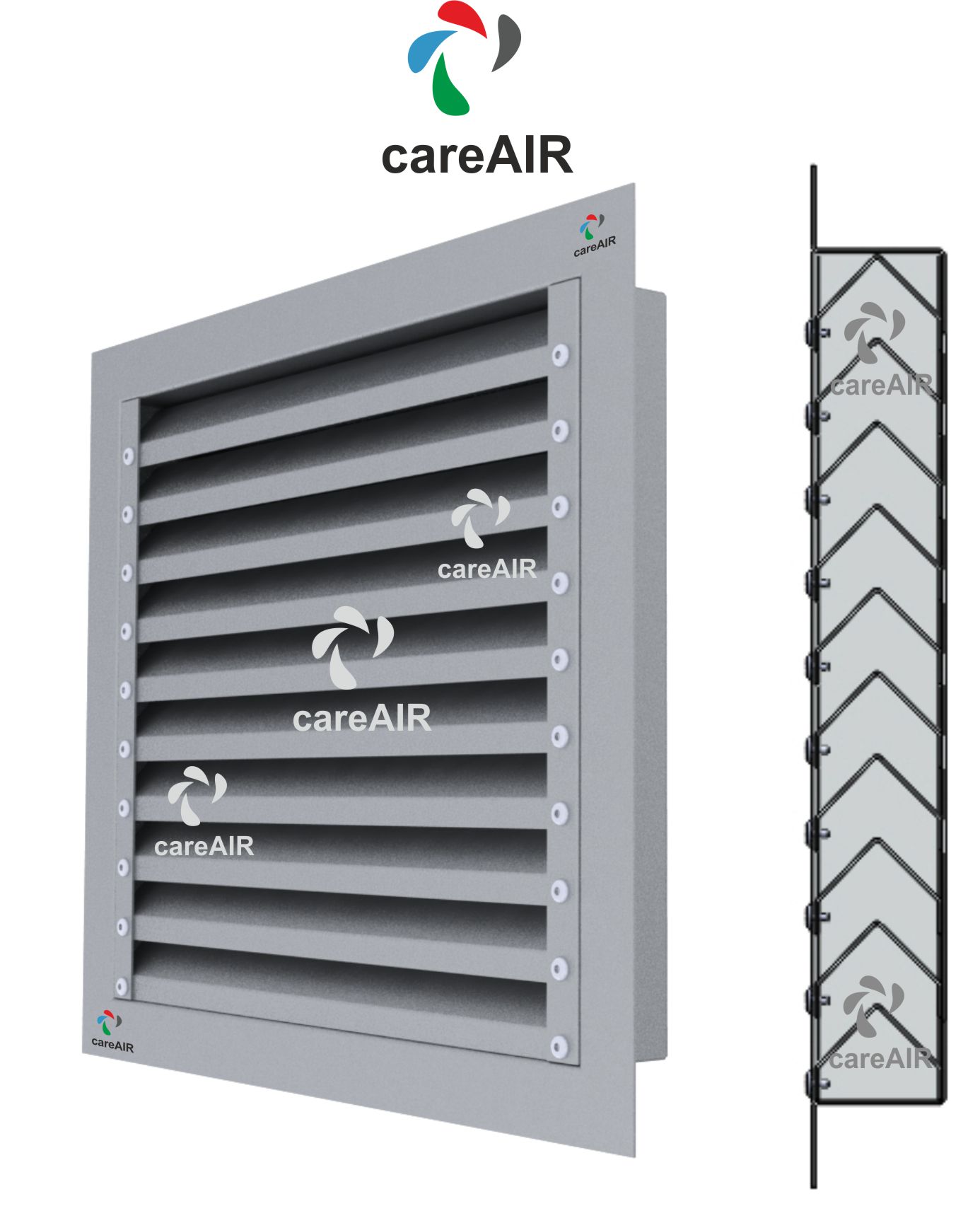
Sight Proof Louvre.
Sight-proof louvres in HVAC systems are specialized air intake or exhaust components designed to block direct visibility through the louvre while allowing air to flow through. These louvres are commonly used in applications where privacy, aesthetics, or security is a priority, while still facilitating effective airflow for ventilation systems. Sight-proof louvres are constructed with angled blades that prevent a clear line of sight through the louvre from the outside. The blade orientation or shape ensures privacy while maintaining adequate airflow. Coated or finished to resist weathering, corrosion, and wear, especially in outdoor applications. The design balances privacy and airflow efficiency, ensuring minimal pressure drop while meeting ventilation requirements.
Acoustic Louvre- Normal
Acoustic louvers in HVAC systems are specialized components designed to reduce noise transmission from air handling systems while allowing airflow. They consist of a series of blades or panels with sound-absorbing materials that help dampen noise generated by fans, compressors, or other mechanical equipment in the system. Acoustic louvers are commonly installed in ventilation openings, intake or exhaust ducts, and areas where sound control is critical. Acoustic louvers are engineered to reduce sound transmission while maintaining effective airflow. They are particularly effective at attenuating low- to mid-frequency noise produced by HVAC equipment. Comprised of multiple slanted or flat blades arranged in a frame. The blades are filled or lined with sound-absorbing materials like Glass wool, foam or other acoustic material. Typically made from durable materials like galvanized steel, aluminum, or stainless steel. Installed in areas where ventilation and noise control are needed, such as in air intakes, exhaust openings, or mechanical equipment rooms.
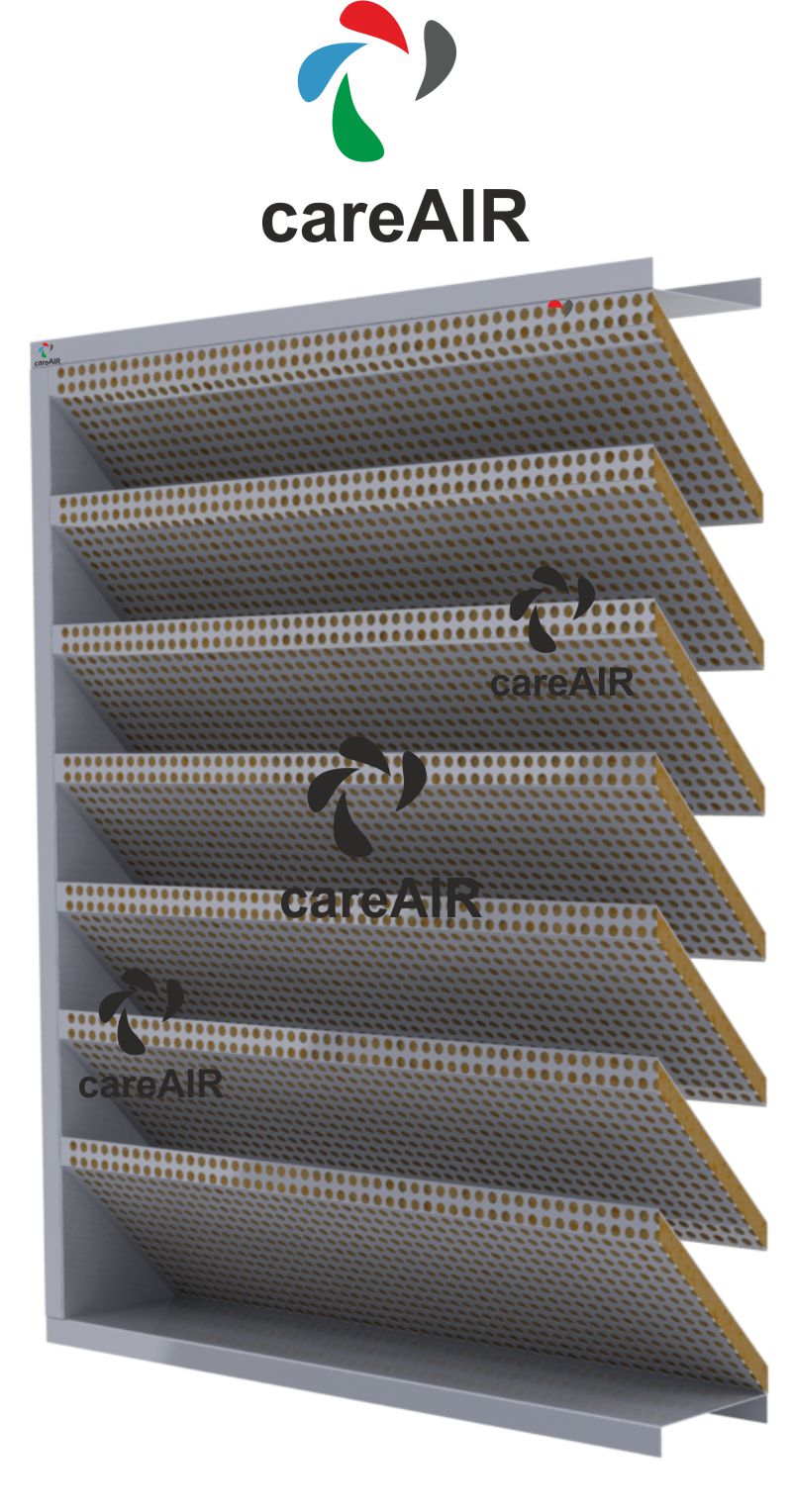
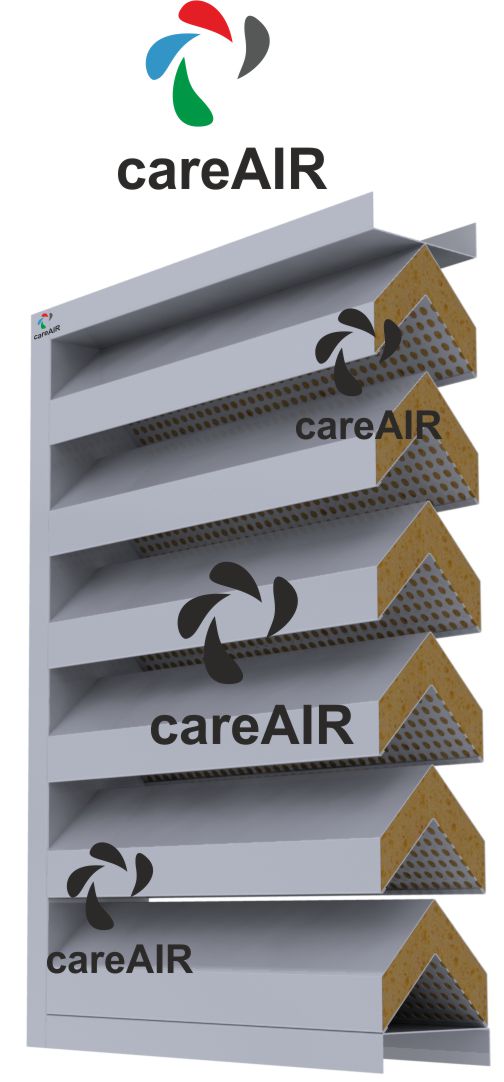
Acoustic Louvre- inverted V shape.
Acoustic louvres with inverted V-shaped blades in HVAC systems are specialized air distribution components designed to allow airflow while minimizing the transmission of noise between spaces or from HVAC equipment to the surrounding environment. The inverted V-shaped blades are arranged to enhance sound attenuation by creating a more complex path for sound waves, effectively reducing noise levels without significantly impeding airflow. The blades are shaped in an inverted "V" configuration, which enhances acoustic performance by reflecting and absorbing sound waves as they pass through the louvre. These louvres may have additional sound-absorbing materials, such as acoustic foam or fiberglass, within the blade or cavity structure. The V-shaped design increases the surface area for sound absorption and interrupts the direct path of sound waves, leading to significant noise reduction. Effective at controlling both low and high-frequency sounds.
Fabricated Louvre- Aluminium/GI/SS - C Type.
Fabricated Louvers - Aluminium/GI/SS - C Type in HVAC systems are components used for air intake or exhaust in ventilation systems. These louvers are constructed from materials such as aluminium, galvanized iron (GI), or stainless steel (SS) and are designed in a "C" shape frame or "Z" shape frame. Their primary function is to allow air to pass through while preventing the entry of rain, debris, or other unwanted particles. These fabricated louvres ensures effective airflow while offering protection against water infiltration and dust. The curved or angled design of the louver blades enhances durability and improves performance in harsh environmental conditions. Can be customized to include additional features like bird screens, insect screens, or rain protection hoods. Primarily used for air intake or exhaust, ensuring proper ventilation while minimizing the entry of unwanted elements.
